#Wan Laiming
Explore tagged Tumblr posts
Text
Red XIII and Sage Fire in Final Fantasy VII (1997), Remake (2020), and Rebirth (2024).
Heya, folks. I'm back after a long break for the holidays. SPOILERS for anything generally related to Red XIII and Cosmo Canyon in the 1997 or Remake releases.
As always, If you think even rudimentary literary analysis is academic hokum reading too far into things, this post is, as kindly as I can say, not meant for you. To the people who enjoy reading and leave kind words even on the posts I've deleted, thank you kindly again.
I'm covering two pieces of the game I adore at once, Red XIII and Cosmo Canyon, so this will be a longer post. To start with, though, I'm going to highlight a piece of media which was highly influential on modern anime and one of its most famous names, Osamu Tezuka.
Princess Iron Fan and Manga Into Anime
One of the underrepresented stories of East Asian media in English is the story of the Wan brothers' 1941 film, Princess Iron Fan. The film loosely adapts the portion of Xiyouji in which the pilgrims need to obtain a legendary fan from the eponymous Princess Iron Fan in order to pass Flaming Mountain. Much of the film depicts heroic duels between Monkey and Princess Iron Fan or Bull Demon King, with Monkey receiving aid from others along the way.
As Hongmei Sun points out in Transforming Monkey: Adaptation and Representation of a Chinese Classic, this film comes at the end of the Republican era of Xiyouji adaptation, so it also exists within the context of the Japanese occupation of much of China. While much of the film is intended as anti-imperialist allegory, Sun points out that the occupation of Shanghai caused text which she gives in English as, "all Chinese people must unite for victory against the Japanese invasion," to be censored from the film's release (61).
This might seem like an odd film to have influenced such a major individual in Japanese cultural exports, but the absence of this message meant that the film's introduction could be used to read the film as a story of people coming together, believing in one another, and overcoming individually insurmountable difficulties and foes outside of the Chinese cultural context at release. As it were, this film and the spirit that can be read from it inspired Osamu Tezuka, along with a picture-book copy of Journey to the West, in his creation of My Son Goku (1952).
This manga was serialized for much of the same time as his Astro Boy (1952) but received an animated film adaptation first as Saiyuki under the English name Alakazam the Great (1960). It was this 1960 adaptation that inspired Osamu Tezuka to move from the world of manga to the world of anime, and it's influence outside of him can be seen to this day. Many anime bear the production features employed on this film, and it's cultural impact extends from inspiration for single characters like Mario's Bowser to being one of the foundational pieces contributing to the work of super deformed media and nekketsu.
While nekketsu isn't a term often used in English, Astro Boy and My Son Goku are examples of foundational nekketsu shonen. If you've ever tried to describe the manga, anime, and RPGs with a spiky-haired, often blonde, naive protagonist who dreams of big things as a child, loses or lacks one or both parents early in the story (especially lacking a father and often around an event that marks a "time skip" in reader and/or character perception of the narrative), has abilities beyond any normal person that might mark them as not wholy or more than human, and seems to only get stronger and more determined or angry when anybody else would die, the word is probably nekketsu, "hot-blood."
If you are aware of Xiyouji, many of these features might seem familiar, and it is because many of the features of nekketsu are simply the influence of Xiyouji and Princess Iron Fan on people like Osamu Tezuka while creating two of his most influential manga among many during the post-war. If there is nothing else, and there certainly is much else, to be found in Hongmei Sun's Transforming Monkey, it is that Monkey is a multivalent character that excels in transforming in exactly this way as well as any other. In a postwar Japan, it only makes sense that the Monkey would adapt to consider questions of belonging, family, goodness, the environment, and humanity when those things had been challenged so thoroughly and intimately by the preceeding decades for people like Osamu Tezuka.

Tezuka's Goku emerging from his rock, the Calamity from the Skies setting up the rise of Final Fantasy VII's protagonist, and a spacepod depositing Toriyama's Goku once Goku had been revealed to be an alien. The sci-fi and environmentalism is Tezuka, but heavenly rocks and metal birthing the protagonist are all Xiyouji
I am going on at length about Tezuka after bringing up this film, but it is important to not understate how influential it and Xiyouji are for nekketsu manga, shonen, and RPGs through the influence of Osamu Tezuka. They are so important for Tezuka and those that worked with him, at least, that one of his final works was a postumously-completed and released animated film entitled I Am Son Goku: The Osamu Tezuka Story (1989). The film was split between a biography of him centered on the Monkey's influence on him and a sci-fi adaptation of his original My Son Goku. Some later releases of My Son Goku even included Tezuka noting how influential the specific gags of My Son Goku had become on other mangaka creating similar nekketsu.
As a cute note before I finally dive into the film for more specific discussion, I Am Son Goku ends with Goku reassuring Tezuka that his works will continue to spread the message of ending war and protecting the environment well after his death, which is another feature nekketsu shonen, manga, and RPGs often share, whether or not they fall closer to sports media or Xiyouji media.
Buddhism and the Journey
As Princess Iron Fan was released into the wartime, Republican environment, the Wan brothers had an interest in downplaying the fantastical and spiritual of the story in favor of the relevant and materially allegorical. Because of this, key moments around these chapters, such as the conflict between Monkey and the Sixth-eared Macaque over the Journey before this section of the story, Red Boy's conversion to the Buddhist cause and away from his parents' past around ten chapters beforehand, the nearby kingdom in which the bald are killed, or any of the main pilgrims having to face their pasts, are left out, ignored, or sidestepped in favor of key narrative points around Flaming Mountain. Other elements, such as a battle with what one might call a masked demon and two fire spirits, an impassioned speech convincing the people nearby that the pilgrims' cause might be right to fight for together, and Bull Demon King crying for his wife and son are added or manipulated.

While not an unheard-of set of opponents to Monkey, the fire spirits and demon mask of Princess Iron Fan (1941) might be more familiar to players of the 1997 release, especially as the mask is used to deliver the first scare of Chinese feature film.
Avoiding the overtly Buddhist is common for modern uses of Xiyouji, with much advertising and Western use largely simplifying the Monkey down to a kind-hearted, rogueish hero. Along with much of the world in the '70s to the '90s, however, these uses in Japan saw a turn back towards the spiritual while maintaining much of the heroicism and secular collectivism found in Princess Iron Fan and Havoc in Heaven (1961).
Highlights of this among these are NTV's Monkey (1978) and both Akira Toriyama's early Dragon Ball as manga (1984) and anime (1986), which used explicitly Buddhist, Taoist, Confucian, and Shinto language and ideas to communicate both spiritual and material ideals. Early Dragon Ball, especially, serves as a blend between the Xiyouji that can be read most easily through 20th century Chinese film export interpreted in Japan, with heroes and the people combating corrupt gods and demons, and as 19th century Chinese textual export interpreted in Japan, with spiritual allegory that extends from our place in communities to our place in the universe as a whole over questions of selfhood and belonging.
With this context and the lens of reading Final Fantasy VII Remake and Rebirth through the lens of Xiyouji as precursor text, we can turn towards the place itself.
Cosmo Canyon and Flaming Mountain

Silk Road Travel advertises with this photo of Monkey on his cloud somersault atop a sign that reads "Flaming Mountain." Not pictured are novelty thermometers, swarms of tourists trying to recreate Xuanzang's journey, or promises of feeling the heat of True Samadhi Fire.
The Flaming Mountains are a real place in China as part of the Tian Mountain range in the Taklamakan Desert. Within Wu Cheng’en's 1592 text, the Flaming Mountain is a result of Monkey's actions in Laozi's heaven, and the nearby community lives in entirely red buildings. Within Princess Iron Fan, Flaming Mountain is much the same, but the nearby community exists capping the peak of a rocky spire. In our world, The Flaming Mountain exists as a folk-history and folk-spirituality tourist destination of sandstone hills situated near the Lianmuqin and Subashi Formations, paleontological sites. Ruins of Buddhist temples dot the sides and caves of the mountains on the Silk Road towards the Flaming Mountains.
While Cosmo Canyon doesn't block the path of the party to a kingdom where those shaved bald are killed, instead sitting on a separate continent from a bar where only the bald are allowed, it does bear the image of many takes on Flaming Mountain. Tifa, for example, takes Cloud back into the unknown journey just before they reach Cosmo Canyon as Tripitika does Monkey into the Journey after the Sixth-eared Macaque fooled him, but the people of Cosmo Canyon live on the sides of a rocky spire and not simply by the road as in the novel.

While both communities help and need the help of those on the journey, the residents of the spire in Final Fantasy VII have always been less-than-interested in conflict.
Cosmo Canyon even bears the image of the real Flaming Mountain, a tourist destination atop a desert site of cultural importance existing within a world rapidly distancing itself from the metaphysics and spirituality of many stories of the past.
Square, however, obviously means to explore this connection to the past. If you are familiar with nekketsu, this and the fact that Jungian collective unconscious and Yogachara Buddhism are involved in creating the third part of the Remake series should be unsurprising - the influence of Xiyouji on nekketsu means that its characters are often embodiments of the Mahayahana Buddhist thought that inspired Jungian theory and, in turn, much of early Western literary theory.
For example, the protagonist of many nekketsu which bear the influence of Xiyouji through Tezuka will have an "evil" double born from a traumatic point in their life which they must defeat and reintegrate in some way to reach an apotheosis in a mirroring of Monkey's allegorical taming of the heart-mind monkey. In a text which takes an explicitly Jungian lens, that might be framed as individuation beginning with a trauma that causes the ego to undergo conflict and, ultimately, integration with the shadow as a part of the path towards realization of the Self.
This should sound similar to a number of Square titles, as they regularly use these two inventories, the psychoanalytic of Jung and Freud and the literary and spiritual of China. A character born of a heavenly rock who must go on a journey and integrate unwanted parts of the psyche alongside an equally allegorical cast was the name of the game for several Square titles from 1997 to 1999 with Cloud, young Cloud, and Sephiroth in Final Fantasy VII, Fei Wong, young Fei Wong, and Id in Xenogears (1998), and Zidane, young(er) Zidane, and Kuja in Final Fantasy IX (1999). This should be as familiar as the formats offered up by any of the other influential works of Chinese literature, like Water Margin (Suikoden in Japanese and transliterated back) and Romance of the Three Kingdoms with their political intrigue and drama.
Few nekketsu, however, more deeply and regularly explore characters involved in these dynamics outside of the main archetypes that can be found in the five pilgrims of the 1592 text. For many nekketsu, the focus can even laser itself onto the primary protagonist as the Self or untamed heart-mind before jumping to characters born of other precursors, such as is the case with Naruto (1999).
Final Fantasy VII, however, tends towards sympathy and mercy towards many of the villainous archetypes born of Chinese literature and popularized through Xiyouji while continuing to give them focus. Of those, my favorite is Red XIII.
Red XIII, Red Boy, and Rebirth
Within the 1592 text, Red Boy's involvement is mostly in Chapters 41-42 of the hundred chapter versions where he deceives the pilgrims about his age, makes attempts to eat the flesh of the Tang Monk to gain immortality, and is finally limited with gold bands on his wrists, ankles, and head by Guanyin to bind him to Buddhist practice. During the events adapted by Princess Iron Fan from Chapters 59-61, Red Boy is largely present only in reference to earlier events.
While there are myriad readings of Red Boy's involvement in Xiyouji, one of the most obviously popular interpretations in Japanese Xiyouji media in the '70s-'90s is that of youthful folly. Red Boy, the young child of Bull Demon King and a powerful demon princess, Princess Iron Fan, is quite often presented as he is in NTV's Monkey (1978) - a youth eager to match the deeds of his parents. Monkey itself goes so far as to remove Red Boy's deception of the pilgrims as an elderly man entirely, replacing it with an outspoken desire to emulate and usurp his elders.
This isn't to say, however, that Red Boy is a character consistently brought into adaptations of Xiyouji in Japan or elsewhere. Red Boy, while a popular character from the 1592 text, is not present in many of the most oft-adapted portions of the text, rendering him a character without much to do or be if he is included at all. As a villain outshone in popularity by his parents, Red Boy often becomes other characters entirely in places he was not before.

While Square and Enix had not yet merged in 1997, their red children of trapped fathers with complicated relationships in Final Fantasy VII's Red XIII and Saiyuki's Kougaiji (Red Boy) are strikingly similar. Few Red Boys have such design similarity.
As a highlight to this point, it is difficult to find an explicit manga, anime, or video game adaptation of Xiyouji from Japan that both contains Red Boy and maintains any symbolism, structure, or allegory from his original appearance. Chi Chi of Dragon Ball (1984) shares some elements with Red Boy during the early parts of Dragon Ball acting as adaptation, like being the child of a "demon" king. She does not, however, share many. Red Boy of the Koei-published tactical RPG Saiyuki: Journey West (1999) is an explicit adaptation of the 1592 character, but his entire story has been transformed through the lens of youthful folly to allow for his parents to join the pilgrims on their journey. He does, however, retain at least a passing connection to Red Boy's sage history and fiery abilities.
Red XIII in Final Fantasy VII blends many of these lenses and modifications while still bending them towards their original form. His flesh-eating and violent origins in attempting to first eat the Monk before attacking Guanyin are restored, for example, in the brief moments before Aerith interacts with the gold-bound boy feigning ferocity and venerability and says, "This child's a friend." This is rather similar to his false-aggression towards Aerith in the 1997 release, but builds more directly towards the reveal that Aerith has deep connections to children and that Red XIII is being deceptive beyond his later attempts to hide his insatiable desire for meat. This allows Final Fantasy VII to retain the frameworks most Xiyouji-influenced stories from Japan direct towards the folly of youth while preserving two elements of Red Boy's taming for other points in the story: the True Samadhi Fire that Red Boy ought to wield and the waters Guanyin provided to defeat it.
True Samadhi Fire, Killing the Unkillable, and the Protector of the Vale
True Samadhi Fire is usually not an important element in adaptations of Xiyouji from Japan. In fact, many Japanese adaptations isolate discussion of it to episodes involving their own Red Boy, implement it as part of an escalating set of powers, make it a one-time threat to the world itself, or exclude it entirely. This is not entirely surprising, as traditional nekketsu media in manga and anime often relies commercially on increasingly powerful threats. Once a threat has been overcome, returning to ponder on the significance of that defeated threat for several releases can itself threaten sales. True Samadhi Fire is one of the only things shown to be an imediate threat that cannot be overcome by Monkey without the aid of Guanyin in the novel, and this as a cycle would be exceedingly boring. If Japaneae adaptations or nekketsu adapt the story of Red Boy being defeated, they often either quickly move on or elevate the stand-in for True Samadhi Fire to a global disaster. This isn't uncommon outside of Japan, either, as Japanese versions of, adaptations of, and works inspired by Xiyouji grow increasingly popular.

Boruto with its weakened True Samadhi Fire, and the descending celestial dumpling standing in for True Samadhi Fire in the Lego Group's Lego Monkie Kid. The small spire is the center of a massive Lego city that Guanyin's waters will be used to protect, and true True Samadhi Fire is discussed in other episodes.
True Samadhi Fire, however, is an exceedingly interesting feature of a demon-turned-devotee like Red Boy. While ignored by many adaptations, True Samadhi Fire is often read to represent a polar opposite of the errant and indecisive mind represented by the Monkey. The "Monkey archetype," unindividuated Self, or heart-mind monkey idea-will horse is impulsive, indecisive, and bound to the whims and energies of the world around it, but the wielder of True Samadhi Fire represents the mind capable of existing in samadhi, an undistracted almost-opposite to the chaos of the heart-mind monkey and idea-will horse.
These features create the opportunity for a character which goes through a journey of cultivation of the body, so to speak, when Monkey's or the central protagonist's is often excluded from works. The "time skip" in nekketsu often serves to occlude this period of the central protagonist's development from the reader. This is the case in Final Fantasy VII (1997) and both entries in the Final Fantasy VII Remake (2020) series, where the period between Cloud's childhood and the destruction of Mako Reactor 1 are obscured by a time skip substantial enough to be acknowledged regularly by the text itself.
As such, these precursor elements can be expanded to explore elements of the story more deeply. Unlike other characters born of the same precursors, Red XIII is able to explore the period of Taoist-influenced teaching under Sage masters that Monkey underwent before his rebellion and imprisonment. Bugenhagen, then, can act as a Sage directing Red XIII towards development of the body, so to speak, as a Patriarch Subodhi-like mentor that usually appears in characters like Dragon Ball's Master Roshi.
More importantly, however, distancing the work from three of the most popular villain "archetypes" in the medium allows Final Fantasy VII and the Remake trilogy to subvert expectations within the plot around them. There is no feeling of grand betrayal when Red XIII reveals his age, but laughing and joking between friends. The audience is even warned fairly early in Junon that Red XIII is both lying and that Aerith doesn't mind. There is no ultimate defeat of the traitorous and detested father of Red XIII, but a tearful reunion and redoubled commitment to the journey. While this mirrors the conversion of the Bull Demon King in many Flaming Mountain episodes, Seto did not need to convert. There was also nothing the party needed there to pass, as the terminal they needed was converted into a turbine. All of this and more allows Red XIII of Final Fantasy VII (1997) to be a character that exists in the niche of deceptive, fiery child-antagonists with powerful parents while expanding on that Red Boy niche in a meaningful way through the Watcher of the Vale title.

Bull Demon King of Princess Iron Fan (1941) and Seto trapped, crying for their red sons, and giving their support to the protagonist's journey.
What this culminates in is threefold: Meteor has become associated with Cosmo Canyon and symbolic of both clarity of mind and duty through it, Red XIII has become the explicit successor to Seto's promise to return Meteor to the Gi, and the Cosmo Canyon episode of Rebirth serves to refocus the journey on Cloud's mental journey by showing the "reader" a child stepping onto the same path. While this all amounts to the same narrative direction as the 1997 release, the short of it is that Red XIII's connection to the symbolic and literary history of True Samadhi Fire has extended from his tail to the symbol of the series itself: Meteor.
Brief Conclusion and Fun Fact
TL;DR: Red XIII fits the Red Boy "archetype" in a way I think is just as interesting as the way Cloud is used to explore the Jungian archetypes "born" of folk ideas from texts like Xiyouji and the folk-Mahayana thought behind and around them. I think this lens also serves as a way to synthesize all parts of Final Fantasy VII into a journey of Cloud's "selfhood" all the way up to "samadhi" and what he must do looming in the sky as Cloud tears himself apart.
As the fun fact for this one, Monkey goes to the edge of creation after his rebellion against Heaven, but he doesn't teleport around and fight his Sixth-eared Macaque like Cloud does his Sixth-shouldered Psychic Shadow.

Monkey of NTV's Monkey at the edge of creation, having flown there on his cloud somersault. Monkey-figures will often travel to the edge of creation, the afterlife, and return to a great city by the end of their journey.
Tezuka work images from Tezuka Osamu Official. Dragon Ball image from fan wikia. Saiyuki image from fan wikia. All used works are mentioned save Anthony C Yu's 2015 Revised Edition of his translation of Wu Cheng’en's Xiyouji, and I've tried to only mention chapter proximity to cut down on this being unreadable to people who don't like that from citations and footnotes. These are getting long enough that I'm just gonna find a way that makes bibliographies doable here.
Thank you for reading if ya did :D
#ffvii rebirth#ffvii remake#ff7#final fantasy 7#ffvii#final fantasy vii#red xiii#nanaki#osamu tezuka#tezuka osamu#wan brothers#wan laiming#xiyouji#saiyuki#cloud ff7#final fantasy VII meteor#samadhi#true samadhi fire#jungian analysis#cosmo canyon#flaming mountain#cloud strife#bull demon king
4 notes
·
View notes
Text
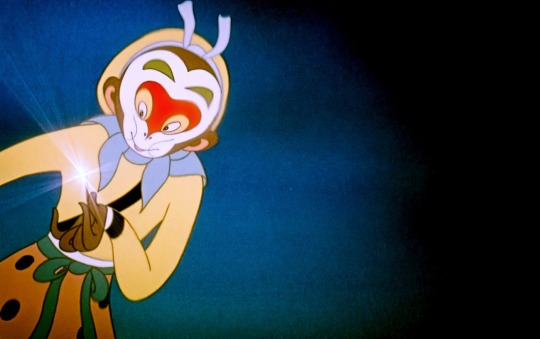
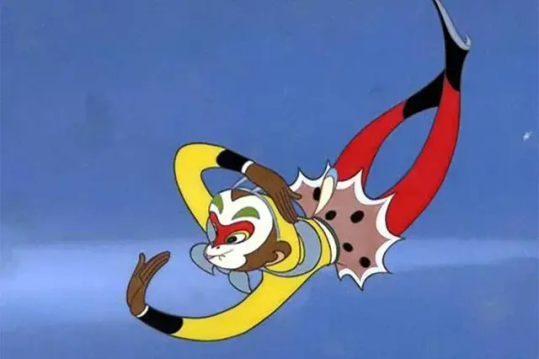

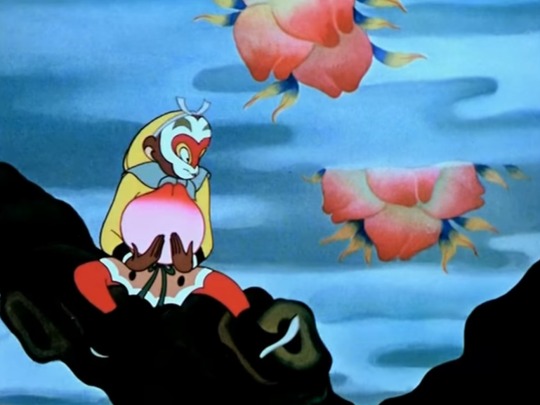
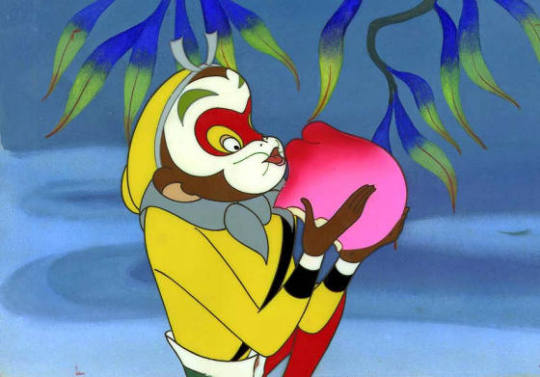
Havoc in Heaven (1961)
8 notes
·
View notes
Photo
@thealmightyemprex @themousefromfantasyland @the-blue-fairie







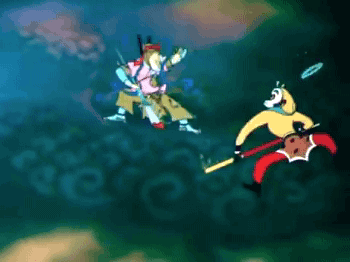


大鬧天宮 / Dà nào tiān gōng (Havoc in Heaven)
113 in x of animated feature film history Release: 1964 Country: China Director: Wan Laiming
“The story is based on the earliest chapters of the Ming Dynasty shenmo novel Journey to the West. The main character is Sun Wukong, aka the Monkey King, who rebels against the Jade Emperor of heaven.
Wan Guchan, of the Wan Brothers and one of the animators of the feature film Princess Iron Fan, began planning the production of Havoc in Heaven––sometimes called Uproar in Heaven––after its release in 1941. However, the project was delayed for over a decade after the Japanese capture of Shanghai during the Second Sino-Japanese War, and later by the Chinese Civil War.
Wan Laiming returned to Shanghai as director of Shanghai Animation Film Studio in 1954, and production of Havoc in Heaven resumed shortly thereafter. The first part of the film was completed in 1961 by Wan Laiming and Wan Guchan. The second part was completed in 1964 with the assistance of Wan Chaochen and Wan Dihuan. Both parts of the film were screened together for the first time in 1965. This was the last major animated film of the Second Golden Era of Cinema of China. A year later, the entire industry was effectively shut down by the Cultural Revolution.
The name of the movie (大闹天宫) became a colloquialism in the Chinese language to describe someone making a mess. Countless cartoon adaptations that followed have reused the same classic story Journey to the West, yet many consider this 1964 iteration to be the most original, fitting and memorable.
The film won great acclaim after putting on the screen. It received Best Film Award at the 13th Karlovy Vary International Film Festival and the 12th London International Film Festival respectively, enjoying high reputation both at home and abroad.
At the time, the film was also used as a joke metaphor for the ‘havoc’ being caused by Mao Zedong (the monkey) in ‘heaven’ (China).”
(source) (source)
Havoc in Heaven is available on YouTube.
FIRST POSTED: 12/2/16
#havoc in heaven#uproar in heaven#Dà nào tiān gōng#journey to the west#大鬧天宮#animated feature film history#Wan Guchan#feature film#Wan Laiming#wan dihuan#wan chaochen#animation#mao zedong#animation history#karlovy vary international film festival#shanghai animation film studio
406 notes
·
View notes
Text









Favorite first watches of February January
Tagged by @gael-garcia, thank you as always Aina 💜
Panna a Netvor (1978 🇨🇿) dir. Juraj Herz
The Monkey King: Havoc in Heaven (1961 🇨🇳) dir. Wan Laiming
Peony Pavillion (2001 🇭🇰) dir. Yonfan
Sepet (2004 🇲🇾) dir. Yasmin Ahmad
Salmonberries (1991 🇩🇪) dir. Percy Adlon
The Aggressives (2005 🇺🇸) dir. Daniel Peddle
Himala (1982 🇵🇭) dir. Ishmael Bernal
Bound (1996 🇺🇸) dir. The Wachowski's
Sardar Udham (2021 🇮🇳/🇬🇧) dir. Shoojit Sircar
#i really had the time in January things got so busy last month#anyways these are some heavy hitters lol#thanks again!
7 notes
·
View notes
Text
Tezuka Osamu Story: I am Son-Goku (1989) 手塚治虫物語 ぼくは孫悟空
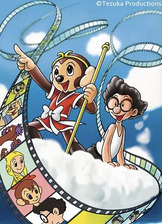
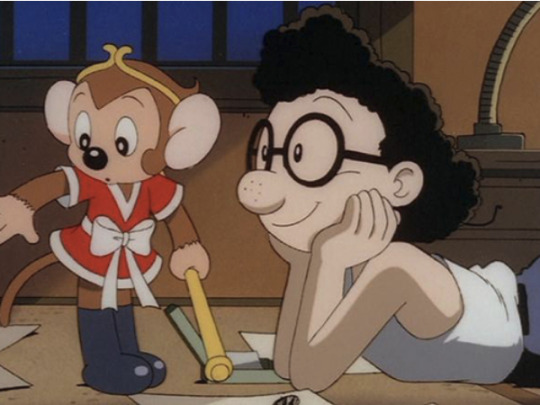

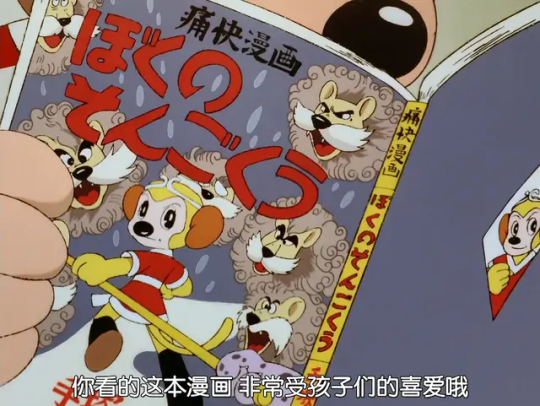
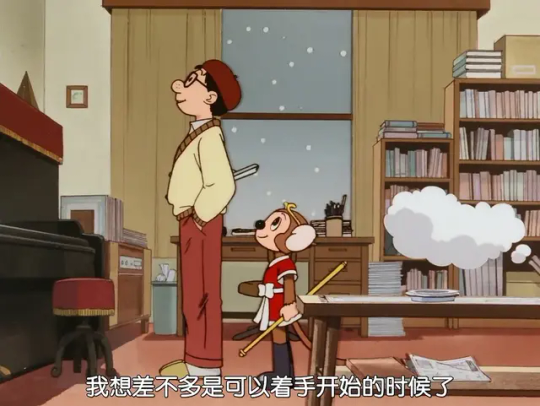
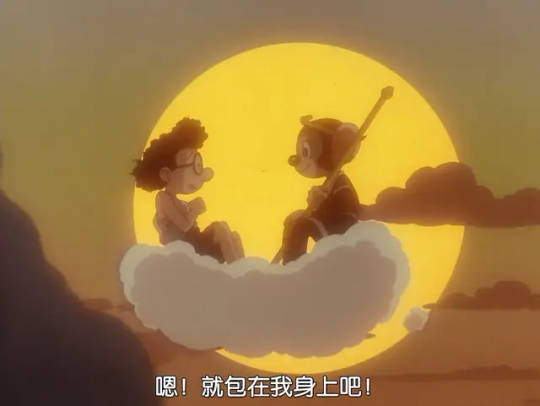
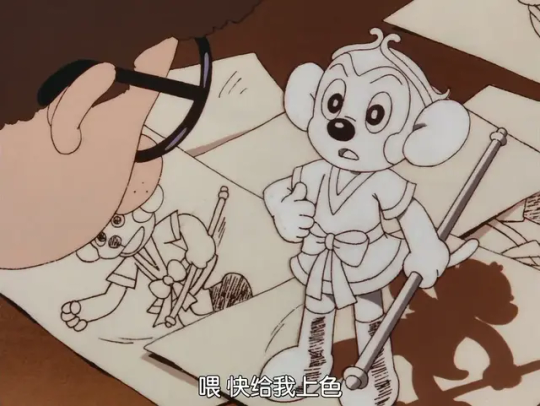
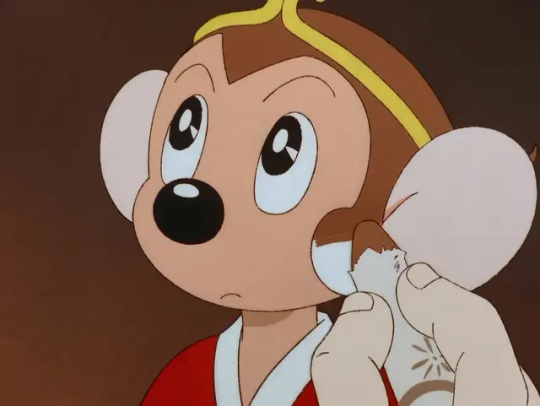
Director: Osamu Tezuka Screenwriter: Osamu Tezuka Starring: Kuniwa Ishii / Tsui Kusao / Kyouji Kobayashi / Mari Shimizu / Kosei Tomita / Yoshiko Fujita / Momi Koyama / Mayumi Tanaka / Kenji Utsumi / Tetsuya Asado / Kaibo Kawakubo / Hisashi Katsuda / Ichiro Nagai / Kaneto Shiozawa / Nishio Germany / Masuoka Hiroshi Genre: Drama / Animation / Fantasy Country/Region of Production: Japan Language: Japanese Date: 1989-08-27 Duration: 70 minutes Also known as: 手冢治虫物语 我的孙悟空 / 手塚治虫物語:我的孫悟空 IMDb: tt1654078 Type: Crossover
Summary:
This is the 12th special animated program for "24-hour Television: Ai wa Chikyu wo Sukuu." The first half of the story is an autobiographical animated piece focused on the episode in which the young boy Tezuka Osamu becomes attracted to the Chinese animated work "Tessen Koshu." Then it uses some episodes from Son-goku to depict how he eventually becomes an animation writer. The latter half is a new science fiction version of Son-goku set against a background of Planet Sapphire in the Galaxy of 3010. This is one of Tezuka Osamu's posthumous works. He unfortunately passed away during the planning stages.
At the world premiere, Takamasa Matsutani, president of Japan's "Tezuka Animation Production Co., Ltd.", accepted an interview with the "International Herald Herald". He revealed a rather touching past incident.
Osamu Tezuka began to create this different Sun Wukong in 1952, and made it into a comic "My Son Goku" and serialized it in a magazine. When creating, Osamu Tezuka also considered using the image of Peking Opera facial makeup, but in the end he making Sun Wukong like a bear perhaps to show the difference. When he died in 1989, he left the draft of the animated film "My Son Goku" in the world. This was also Osamu Tezuka's last animated work.
The indissoluble bond between Osamu Tezuka and Sun Wukong dates back to when he was in middle school. At that time, he watched the cartoon "Princess Iron Fan" produced by the brothers Wan Laiming, the founder of Chinese animation, and made up his mind to make animation his lifelong career. Therefore, there were later cartoons and animated characters such as "Astro Boy" and "Jungle King" that grew up with a generation. It was his comics and animations that saved the Japanese animation industry, which was on the verge of collapse at the time. "My Son Goku" also records the friendship between Osamu Tezuka and Wan Laiming.
Matsutani Takamasa said: "Mr. Wan is the person that Mr. Tezuka respects and admires the most. Many people think that Mr. Tezuka is more influenced by Disney animation. In fact, he was influenced earlier by Chinese animation, especially Mr. Wan's animation, and more profound.” In 1988, Osamu Tezuka came to China and paid a special visit to Wan Laiming, who was already in his seventies. After returning to Japan, Tezuka Osamu completed the draft of his last animated film "My Son Goku" and wrote "This is my Son Goku" on the title page. "After he visited Mr. Wan, he already knew that he would die soon and completed "My Son Goku". Before his death, he used his work to say hello to Mr. Wan and tell Mr. Wan, 'I'm going.'" When he said this, Matsutani Xiaozheng's tone was a little heavy.
In 2003, to commemorate the 50th anniversary of Astro Boy's birth, Tezuka released the cartoon "My Son Goku", to which Osamu Tezuka devoted special emotions to.
Source: https://tezukaosamu.net/en/anime/63.html
Link: https://gogoanime.be/watch/tezuka-osamu-monogatari-boku-wa-son-goku-WYPj-episode-full/
#Tezuka Osamu Story: I am Son-Goku#手塚治虫物語 ぼくは孫悟空#手冢治虫物语 我的孙悟空#手塚治虫物語:我的孫悟空#jttw media#jttw movie#movie#animation#crossover#sun wukong cameo#sun wukong centered
20 notes
·
View notes
Text





5 images
"Adieu eri" 2022, Tatsuki Fujimoto
"Havoc in Heaven" 1961/1964, Wan Laiming
"anges et aéroplanes" 1914, Natalia Goncharova
"Beijing couple in a park" 1978, Liu Heung Shing
couverture du magazine "Drum" 1956
0 notes
Text






The Monkey King: Uproar in Heaven (1961)
Wan Laiming
0 notes
Text
~*GREE♱INGS, M⛧R♱ALS.*~
I am ♱he GRAND DAEM⛧N L⛧RDE, wh⛧m y⛧u may refer ♱⛧ as ♱HE DEM⛧N L⛧RD, DEVIL L⛧RDE, DAEM⛧N L⛧RD, DEM⛧N L⛧RDE, DEVIL L⛧RD, and ⛧f ☾⛧urse, DAEM⛧N L⛧RDE.
I am an IMM⛧R♱AL DEVIL SPIRI♱ ♱rapped wi♱hin ♱he b⛧dy ⛧f a Y⛧UNG VI⛧LE♱BL⛧⛧DED ♱R⛧LL. H⛧wever, I am n⛧♱ a MISERABLE LI♱♱LE M⛧R♱AL like ♱he res♱ ⛧f y⛧u. I am P⛧WERFUL and AN☾IEN♱ and will even♱ually RAIN D⛧WN MY BL⛧⛧DY VENGEAN☾E UP⛧N Y⛧U ALL! MUAHAHAHAHAH!
My h⛧bbies in☾lude DARK MAGI☾, RI♱UAL SA☾RIFI☾E, MURDER, EVIL, and pra☾♱i☾ing my DIAB⛧LI☾AL DEVIL L⛧RDE LAUGH.
Y⛧u may N⛧♱ in♱era☾♱ wi♱h me if y⛧u d⛧ n⛧♱ iden♱ify wi♱h my DARK ☾AS♱E EQUALISM, if y⛧u are a BR⛧WNBL⛧⛧D wh⛧ ☾laims ♱⛧ be a M⛧♱H, if y⛧u kn⛧w me fr⛧m my M⛧R♱AL PERS⛧NA in ♱he ⛧FFLINE SPA☾E, if y⛧u are AN♱I-KIN ⛧r use ♱he ♱erm KINNIE whi☾h is an AN♱I-KIN SLUR, ⛧r if y⛧u are a prep. Y⛧u may in♱era☾♱ if y⛧u are jus♱ N⛧♱ G⛧♱HI☾, bu♱ y⛧u may N⛧♱ in♱era☾♱ if y⛧u are a PREP, whi☾h is DEPL⛧RABLE. D⛧ N⛧♱ ♱ALK ♱⛧ ME IF Y⛧U ARE PREA☾HING AB⛧U♱ MIR♱H I D⛧ N⛧♱ WAN♱ ♱⛧ HEAR I♱ S♱⛧P PU♱♱ING Y⛧UR PAMPHLE♱S UNDER MY D⛧⛧R!
0 notes
Text
Princess Iron Fan (1941)
The first asian animated movie
So here's a funny story of mine: during the pandemic two of my friends became obsessed over the show "Lego Monkie Kid" and because it became a hyper fixation to them they, naturally, got me into the show as well and god was I hooked as well and became a fixation for me too.

It's a gorgeous show, one that I heavily recommend but this story is not about that show because while I did know the entire show was based on the book "Journey to the West" I didn't know until looking at a list of released films during the 40's, is that a certain character of the show had not only an animated film but even held the crown for being one of the most important animated films in history.
This is the story of the animated movie of Princess Iron Fan

A dream among the war
In 1937 China was in complete caos. The Japanese started to conquer parts of China in an attempt to get more territory, this lead to the Shanghai War (August 13, 1937 to November 26, 1937). This war lead to many casualties, from civilians to buildings, people were quickly displaced in order to evade the war. Four of these people were the Wan Brothers: Guchan, Laiming, Chaochen and Dihuan.

Now the brothers were interested in animation and were mainly inspired by American cartoons and have even made some animated shorts like "Uproar in the Studio" (1924) and "The Camel's Dance (1935) which was the first animation with sound in China. So they had more than enough skills to create a full length film and when "Snow White and the Seven Dwarfs" came out in 1937 they were determined to create if it wasn't for the fact that, well, China was in war. When the war broke out 3 of the brothers left Shanghai and fled to Wuhan while the youngest of the four, Dihuan, stayed in Shanghai to help family. During their time in Wuhan, the three brothers started working for the China Motion Pictures Studio to make anti Japanese propaganda but when things became less stable in Wuhan and some film company were back in business the brothers decided to return so they could finally make a film. And then Chaochen decided to stay in Wuhan.... So now the two brothers, Guchan and Laiming returned to Shanghai to make their film and oh wait they are still in war. Originally the brothers wanted to make a fully colored animated film of "Uproar in Heaven" but the price for film became incredibly expensive so that idea was scrapped and that resulted in:
Princess Iron Fan's production
With over 300 workers on the film and a total of 20,000 drawings in the end you would think that production went smooth sailing right?

Okey so there were a lot of problems the brothers faced
Problem number 1: The crew
Here's the thing about being the first in something, it means no one else knows how to do that thing. While the people working in the studio knew something about art non of them knew how to animate, so while the brothers were doing stunning shots for the movie, the trainees fell short this lead to two things
Guchan had to supervise the animators and even provide training so that the production could reach Disney standard
They had to make models so that animators could use as reference by placing the figures inside a replica of the set which means buying more things = using more money

Problem number 2: War
Yeah it's pretty obvious that the war was the mayor roadblock of the brother's career. War made not only film expensive but the materials to make it expensive, this crucial because in order to complete the movie they needed two things: A rotoscope, which allowed animators to trace the movements of prerecorded live action film to make the movement in humans look more natural and smooth. And a Multiplane camera, so that they could move not only the background accordingly to the story but also create more dynamic scenes with the background like being able to zoom in or out on the environment.
Problem number 3: Who is even going to watch it?
Shanghai was deserted compared to how it usually was (for obvious reasons) leading to the fear that the film was going to fail to the point that even their investor, Zhang Shangen, wanted to leave the project completely.
And yet against all odds on November 19th, 1942 the movie was premiere in the Metropol and Astor Theatre cinemas in Shanghai. And it became a success.
youtube
The story is very simple compared to the beast that is the novel of Journey to the West. Basically the monkey king, Sun WuKong, and some villagers went to Princess Iron Fan asking to borrow her fan to put out a fire that was spreading. Iron Fan refuses leading to WuKong fighting her and making things even more complicated when the Bull King, Iron Fan's husband, get involved. In the end WuKong gets the fan and saves the village.
Not all stories have a happy ending....
Unfortunately though, the brothers would never be able to make another breakthrough in the animated industry again. While they did make eventually "Uproar in Heaven" in the 1960's and Disney offering them an invite to his studio. The majority of the films the brothers wanted to produce and even started were either destroyed by the war or did not have the budget for it. They also refused Disney's invitation to join him in the USA leading to now the brothers being not very known by people in the West. While I truly don't doubt that they are probably very well known in China, it's honestly a shame that they didn't get the recognition they deserved considering everything they went through to make it but well that's just how the story of the first asian animated movie "Princess Iron Fan" ends. Until next time (watch lego monkey kid btw)
References
https://www.sixthtone.com/news/1014051 https://www.jiemian.com/article/656867.html https://www.filmsfatale.com/blog/2023/1/18/the-world-of-movies-princess-iron-fan https://en.wikipedia.org/wiki/Wan_Laiming#Achievements
0 notes
Text
Uproar in Heaven (1961–1964), dir. Wan Laiming and Tang Cheng, Shanghai Animation Film Studio
Beautiful animation of fairy that looks very similar to Korean fairies. I wonder what the origin of these fairies are. They have specific hairstyle and clothes…
0 notes
Note
An excited squeal escaped the goddess when she was flipped over and fucked. She didn't know how, but she managed to turn onto her stomach, pressing herself more into him. Her hands gripped the blankets under her as she moaned louder than before from the new position.
"Cl-laim me a-all you wan-nt." She managed to moan out.
🍑(Aphrodite if that is okay)
Aphrodite let out a gasp, followed by a giggle when she felt a hand on her ass.
"Feeling cheeky, aren't we?" She asked with another giggle.

@headofrdi
35 notes
·
View notes
Photo

Princess Iron Fan
Wan Guchan & Wan Laiming China, 1941
#Princess Iron Fan#Tie Shan Gong Zhu#The End#gif#1941#Wan Guchan#Wan Laiming#China#1940s#animation#chinese
13 notes
·
View notes
Text
Princess Iron Fan (1941) 鐵扇公主
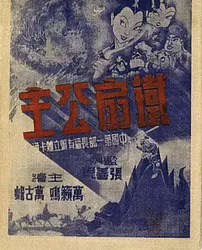


Director: Wan Laiming / Wan Guchan Screenwriter: Wang Ganbai Starring: Bai Hong / Yan Yueling / Jiang Ming / Han Langen / Yin Xiucen Genre: Drama / Animation / Fantasy Country/Region of Production: Mainland China Language: Mandarin Chinese Date: 1941-01-01 (Mainland China) Duration: 72 minutes (China) / 65 minutes (Japan) Also know as: Princess Iron Fan IMDb: tt0471945 Type: Retelling
Summary:
The four master and disciples of Tang Monk rushed to the west, and gradually felt the heat steaming over them. When asking about the countryside, they learned that this place is called the Flame Mountain. There is no spring or autumn, it is hot all year round, and there are 800 miles of flames surrounding the mountain. Frustrated by the Flame Mountain, Sun Wukong and Zhu Bajie went to the Banana Cave in Cuiping Mountain to ask Princess Iron Fan to borrow a banana fan to extinguish the fire, but Princess Iron Fan refused to lend it. Sun Wukong turned into a bug and got into Princess Iron Fan's belly to make a fuss, but what he got was a fake fan. Zhu Bajie transformed into the Bull Demon King and tricked Princess Iron Fan into getting a real fan. The Bull Demon King was having fun with the Vixen at this time. When he heard that the fan had been taken away, he quickly returned home, and then transformed into the appearance of Sun Wukong and deceived the fan back from Zhu Bajie. At the end of the film, Wukong, Bajie, and the villagers teamed up to defeat the Bull Demon King, finally obtain the treasure fan, extinguish the fire of the Flame Mountain, and embark on the journey to learn the scriptures.
The Bull Demon King in the film is actually an allusion to the Anti-Japanese War, and the Wan brothers wanted to use this film to inspire the enthusiasm of the people across the country. This film is China's first full-length three-dimensional sound cartoon (animated film). Osamu Tezuka was also influenced by "Princess Iron Fan" and decided to engage in the animation industry.
Source: https://movie.douban.com/subject/1466022/
Link: https://youtu.be/ocUp840yj2c
#Princess Iron Fan#鐵扇公主#jttw media#jttw movie#movie#animated#animation#retelling#princess iron fan#sun wukong#monkey king#bull demon king#princess jade face#zhu bajie#sha wujing#tang sanzang#monk tripitaka#princess iron fan centered#rewrite
21 notes
·
View notes
Text
Ah, yes. This age-old debate.
It’s actually really interesting!! Since I’m basically swamped and drowning in research for my thesis (comparing Nezha 1979 and Nezha 2019 with a focus on national style), the history of Chinese animation (which is interconnected with the history of Japanese animation) is on my mind, so I guess I’m cracking my knuckles and prepping myself to talk about the “godfather of anime” and creator of Astro Boy and Kimba himself, Osamu Tezuka.
Creation is...circular. People are always influencing one another.
As my research has taught me, Osamu Tezuka actually saw the first feature-length 1941 Chinese animated film (also the first feature-length animated film in all of Asia), Princess Iron Fan, as a teen. It heavily inspired him.
You can actually see the impact Princess Iron Fan had on him from this clip of his autobiographical film:
https://youtu.be/36OfEZ3e4xY
youtube
(Fun fact: at the time of Princess Iron Fan’s release, Japan was occupying China, so a lot of Japanese people actually saw the film. Japanese critics even said their animation industry should learn from the movie. It did technically have an anti-Japanese message in that it encouraged people to band together and fight the enemy, but Japan let it slide, especially since the creators of the film, the Wan brothers (who are essentially China’s Disney), played up the fact it was an accomplishment for all of East Asia, which Japan wanted united under Japan, so they touted it as an achievement of Japan’s too.)
(Fun fact continued: the Japanese navy also saw Princess Iron Fan and commissioned a Japanese director to make Japan’s first feature-length animated movie, Momotarō Umi no Shinpei, which was a propaganda film for the Japanese side of the war that they could show their colonies, with an anti-American message. It was released too late in 1945 when the war was winding down though, so most of Japan’s colonies didn’t see it, but Osamu Tezuka did, and I believe he’s quoted as saying he was moved to tears by it).
Okay, now back to the story:
Osamu Tezuka found inspiration in Princess Iron Fan, even making manga centering around Sun Wukong, the Monkey King. Sun Wukong is a popular Chinese mythical hero who’s been adapted into media a lot (including by the Wan brothers), and Princess Iron Fan is one of the stories from the Ming dynasty novel that featured Sun Wukong, Journey to the West.
(Bonus fun fact: Sun Wukong is actually the inspiration for Dragon Ball too! Son Goku’s name is literally just Sun Wukong in Japanese.)
In fact, he was so inspired, when he got to adapting the Princess Iron Fan part of Journey to the West for his manga, he admitted he couldn’t stop thinking about the 1941 animated movie and felt like he plagiarized it too much in his manga. Kind of ironic, considering the Kimba and Simba debate. 😆
Osamu Tezuka’s very own first animated film was in fact an adaptation of Sun Wukong with Toei Animation (the movie was imported into the US as Alakazam the Great. God that title... Turning Sun Wukong’s name into Alakazam sure is...something).
Osamu Tezuka saw Wan Laiming, the most famous of the Wan brothers, as an inspirational figure and wanted to meet him. He got his wish, going to China to meet Wan Laiming in 1981 after Osamu Tezuka learned he himself had cancer, with the two of them even drawing their most famous characters together:


(Astro Boy hanging out with the Wan brother’s version of Sun Wukong, which is also one of his most famous renditions—most Chinese people will instantly recognize this design of Sun Wukong from the 1961-64 film Uproar in Heaven).
Osamu Tezuka even made a speech about the impact the Wan brothers and Sun Wukong had on him at the event, which is pretty cool!
He’s even written a greeting card for Wan Laiming:

Fun fact (I know, I know, I’m inserting a lot of fun facts): Osamu Tezuka also received influence from Disney (as did the Wan brothers—they arguably mostly learned from the Fleischer brothers, but Princess Iron Fan happened because Wan Laiming and his brothers saw Disney’s Snow White and the Seven Dwarfs in China). Pictured below is a card that Osamu Tezuka wrote Carl Barks, who made Disney comics:

As for Osamu Tezuka and Wan Laiming’s budding friendship from their 1981 meeting, I believe he unfortunately passed away soon after, preventing them from meeting again. 😔
Now before I continue on about Osamu Tezuka, some of you might be wondering why China doesn’t have more notable animated movies from the twentieth century if they started innovating with Princess Iron Fan. You can actually blame the Cultural Revolution for that, as things got super complex after China was left devastated from the Second World War. Mao Zedong took over and while at first he supported the arts and wanted to elevate artistic standards, letting artists create whatever they want, he eventually changed his mind due to Soviet influence as China tried to stick with socialist realism (making mostly realistic cartoons that could also serve as propaganda).
This is actually why the first part of Uproar in Heaven, released in 1961, was well-received and celebrated while the second part of Uproar in Heaven, released in 1964, was criticized and later banned. At first, it was seen as good art, with Sun Wukong rebelling against China’s old gods. But by the second part, the Cultural Revolution’s focus had shifted and it thus became seen as a sign of rebellion against Mao’s government and/or a sign of art that didn’t serve the common people (because it wasn’t realistic).
It wasn’t until 1979 that China would make another iconic animated movie (Nezha Conquers the Dragon King). But by then the damage had been done and China was forced to play catch-up in the industry, with Japan already having set itself as a powerful innovator in the animation industry.
And of course, as the “godfather of anime,” Osamu Tezuka played a large role in establishing Japan as the animation powerhouse it is today.
Kind of ironic and really fascinating!
Especially since China is now making its own animated series (donghua), and many of them have a clear anime influence on them. As I mentioned in a video presentation (made for my Chinese class) about Chinese animation, this is also because in playing catch-up, Chinese animation studios did a lot of outsourcing for Japanese animation. That, and because after China opened up in the 1980s, they got a lot of animated series imported from Japan, so plenty of today’s donghua creators grew up watching anime.



(Wow, would you look at all that anime influence? Guess what comes around, goes around... From Fleischer & Disney -> Wan Brothers -> Osamu Tezuka -> anime -> Chinese donghua... And even then, inspiration is again circular, and not nearly as neat/linear as what I just listed. 😉 )
Now a few more thoughts on Osamu Tezuka himself before I finish this post...:
The warthog with a spanking kink thing makes me think again about how...Osamu Tezuka’s art definitely wasn’t always for children (he had his...fetishes? Including transformations).

Saberspark also recently reviewed his adult animated movie, Cleopatra.
He was definitely an artistically creative man and an important forefather of the anime industry, but he had his unique points. And based on the summary of Kimba and how it even has pro-colonization themes, I guess he had some yikes to him too. Kinda makes sense...he did grow up during Japan’s aggressive military conquering in the Second World War... 😬
I guess what I’m getting at is that yeah! Stories get told over and over again and influences are everywhere. Even the mighty Osamu Tezuka, who so many put on a pedestal due to his innovation and his creation of Astro Boy (which gets even furthered by people who believe Disney plagiarized his Kimba in making their Simba), actually pulled inspiration from other places too—and from an unlikely, not-often-talked-about source too: Chinese animation, the Wan brothers, and Sun Wukong.
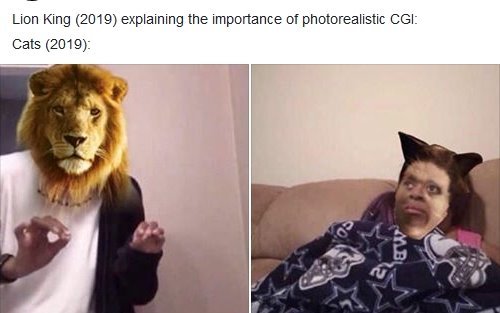
#The Lion King#Cats 2019#Kimba the White Lion#Japanese animation#Chinese animation#kuku rambles#kuku88#Osamu Tezuka#Wan Laiming#the Wan brothers#animation history#Youtube
409K notes
·
View notes
Photo

behind the scenes: an animator using a mirror to better animate Sun Wukong’s expressions
大鬧天宮 / Dà nào tiān gōng (Havoc in Heaven)
1964 China Wan Laiming
(source)
filed under: China, 1960s, staff
#havoc in heaven#behind the scenes tag#behind the scenes#uproar in heaven#Dà nào tiān gōng#大鬧天宮#1964#1960s#china#Wan Laiming#behind the scenes tag china#behind the scenes tag 1960s#behind the scenes tag staff#staff#animation#sun wukong#journey to the west#animation history
32 notes
·
View notes
Text
24 Chinese Animated Movies to Watch
24 Chinese Animated Movies to Watch
A list of Chinese animated films of all time, including adaptations of the Chinese folklore, fantasy & sci-fi movies, and a few surprises.
From family-friendly movies to drama, to classics.
Classics Princess Iron Fan by Wan Laiming, Wan Guchan (1941)
The story was liberally adapted from a short sequence in the popular Chinese folk tale Journey to the West. Wan Laimingpioneered the Chinese…
View On WordPress
0 notes